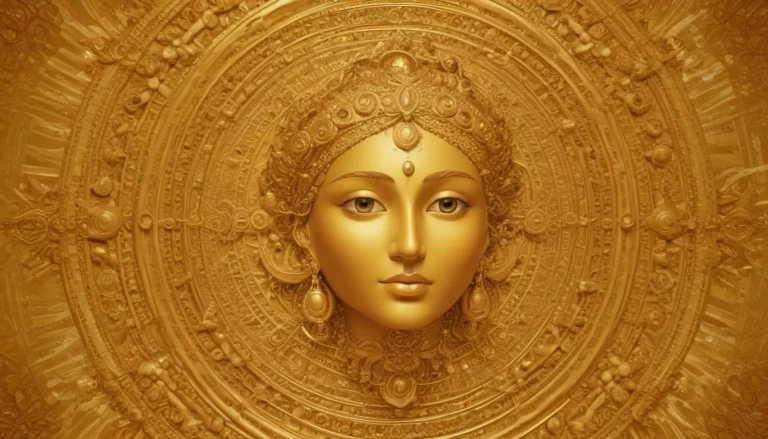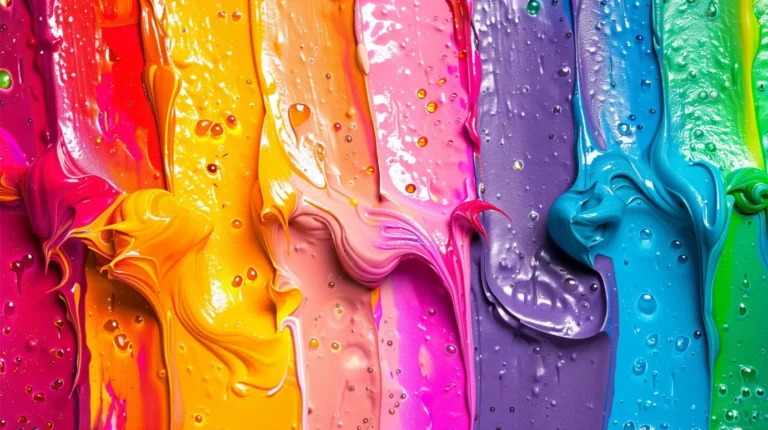
The color purple has long been associated with spirituality, mysticism, and the divine in various cultures around the world. It is a complex and multifaceted color that can evoke different feelings and emotions depending on the context in which it’s used or perceived. In this comprehensive guide, we will dive deep into the spiritual meaning of the color purple and explore its significance across different cultures, religions, and belief systems.
The Color Purple: A Spectrum of Meanings
Before delving into the spiritual aspect of the color purple, let’s first understand what it represents in a broader sense. The color purple is a unique blend of red and blue, two colors that hold strong emotional connotations. Red signifies passion, energy, and love, while blue symbolizes calmness, stability, and trust. By combining these two opposing energies, the color purple creates a sense of balance and harmony between the physical and spiritual realms.
On a basic level, the color purple can evoke feelings of luxury, creativity, and mystery. It is often associated with royalty and power due to its rarity in nature and the effort required to produce it through dyeing processes. This regal connotation has led many cultures to associate the color purple with spiritual growth, enlightenment, and transcendence.
Purple in Ancient Cultures and Religions
Throughout history, various ancient cultures have recognized the spiritual significance of the color purple. For example, in Egypt, the color purple was used for religious ceremonies and was believed to possess mystical properties that could ward off evil spirits and promote spiritual growth. Similarly, in ancient Greece, the color purple was associated with Aphrodite, the goddess of love and beauty, symbolizing passion, creativity, and inspiration.
In Christianity, the color purple is often linked to Lent and Advent seasons, representing penitence, repentance, and preparation for spiritual transformation. During these times, many churches decorate their interiors with purple liturgical vestments and banners as a reminder of the need for introspection and self-improvement.
The Color Purple in Eastern Traditions
In Hinduism, Buddhism, and Taoism, the color purple is often associated with wisdom, enlightenment, and spiritual awakening. It represents the fusion of masculine (red) and feminine (blue) energies, symbolizing balance and harmony within oneself and the universe. In Tibetan Buddhism, the color purple is used to represent the Bodhisattva, a being who has attained enlightenment but chooses to remain in the world to help others achieve spiritual growth.
In Chinese culture, the color purple is associated with the element of metal and the planet Venus. It is believed to bring harmony, balance, and good fortune to those who wear or surround themselves with it. In Feng Shui, the color purple can be used to enhance creativity, self-awareness, and spiritual growth in a space.
The Purple Chakra: A Spiritual Energy Center
In many spiritual traditions, the color purple is associated with the crown chakra, located at the top of the head. This energy center is believed to connect us with higher realms of consciousness, guiding us on our spiritual journey towards enlightenment and self-realization. When balanced, the purple chakra can help us develop intuition, spiritual insight, and a strong sense of connection to the divine.
To work with the crown chakra and harness the spiritual power of the color purple, consider incorporating crystals like amethyst or clear quartz into your meditation practice. These stones are known for their ability to enhance spiritual growth, intuition, and psychic abilities. Additionally, visualizing a bright, glowing purple light at the top of your head can help activate and balance this energy center.
How to Incorporate Purple into Your Life for Spiritual Growth
If you’re drawn to the spiritual meaning of the color purple and wish to incorporate it into your life for personal growth, there are several ways to do so:
- Wear clothing or accessories in shades of purple to surround yourself with this powerful color throughout the day.
- Decorate your home or workspace with purple-colored items, such as candles, flowers, or artwork.
- Practice meditation or visualization exercises focused on the crown chakra and its connection to spiritual wisdom.
- Engage in activities that promote introspection, such as journaling, reading inspirational texts, or attending spiritual workshops.
- Work with crystals like amethyst or clear quartz to enhance your intuition and connect with higher realms of consciousness.
- Create a ritual around the color purple, such as lighting a purple candle during meditation or using purple essential oils in your self-care practice.
In conclusion, the spiritual meaning of the color purple is vast and multifaceted, reflecting the complex nature of our inner selves and our connection to the divine. By understanding its significance across various cultures and belief systems, we can harness its power to promote personal growth, spiritual insight, and a deeper sense of connection with the universe. As you explore the many ways in which the color purple can enhance your life, remember that the journey towards enlightenment is one of continuous learning and self-discovery.





